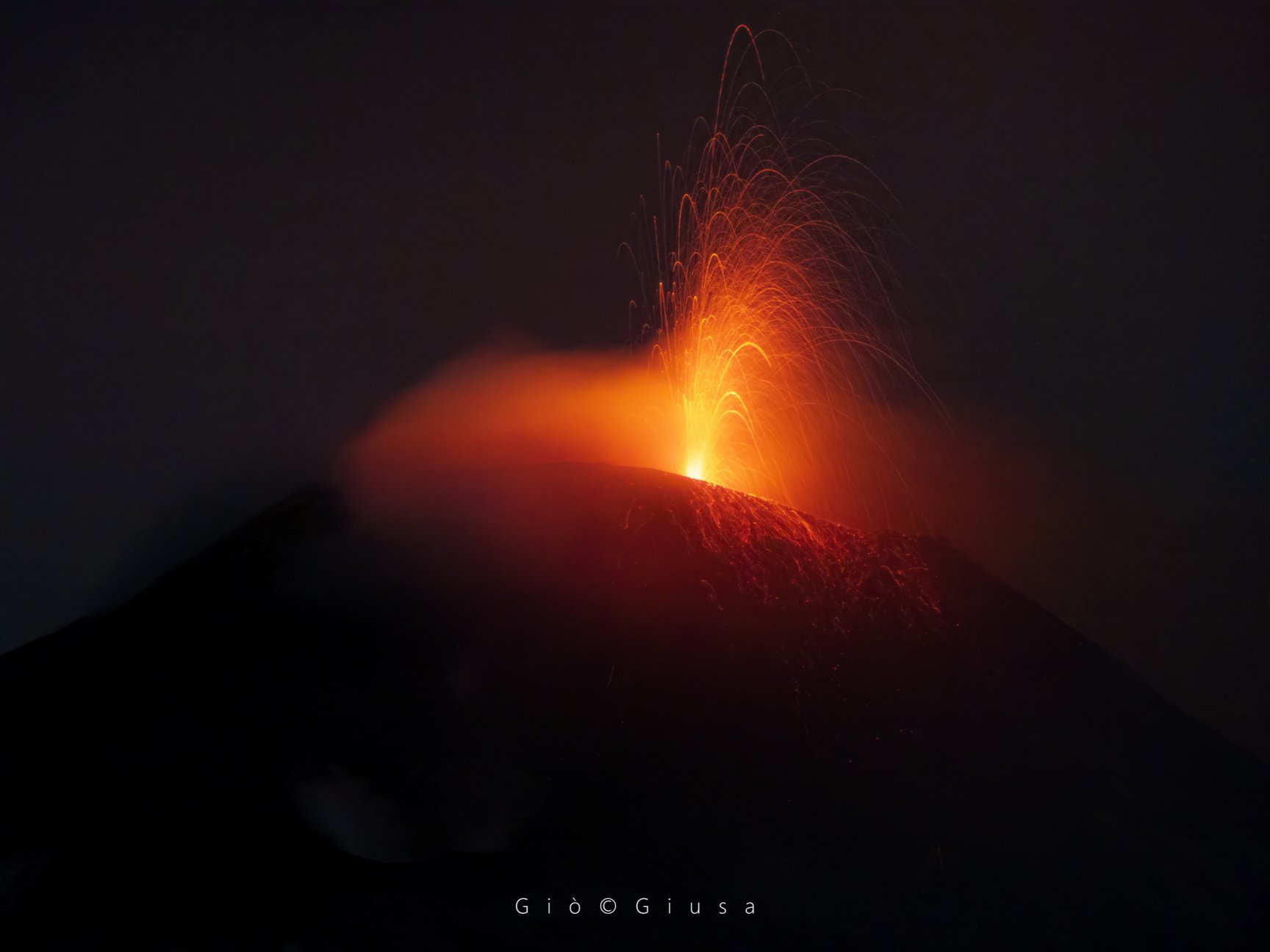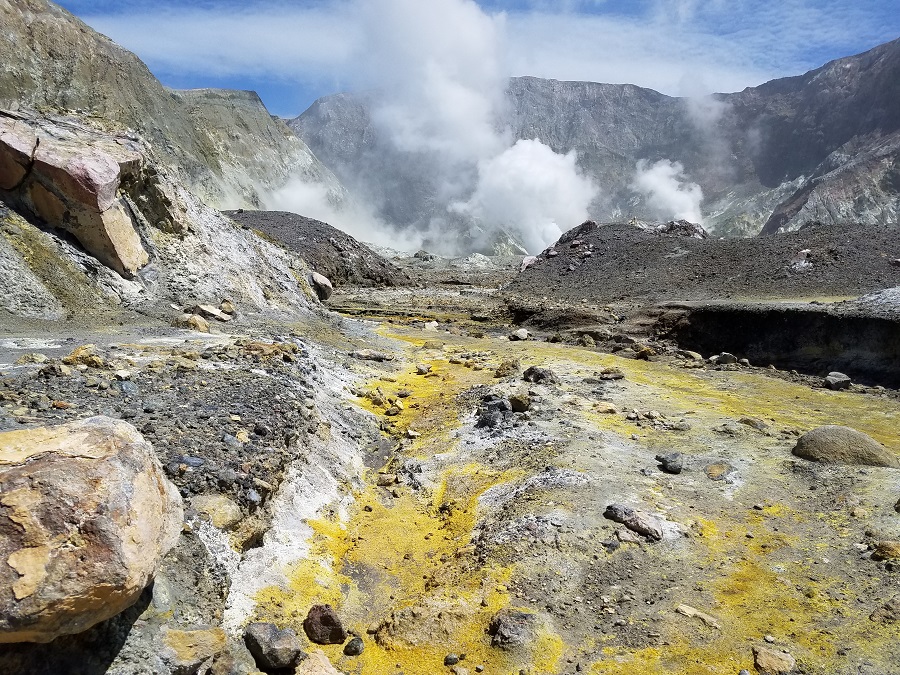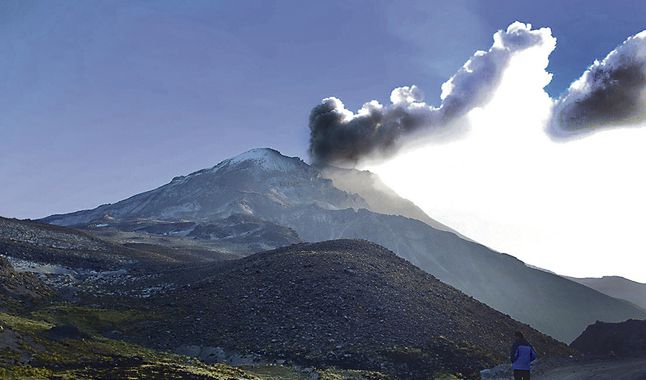December 19 , 2019
New Zealand , White Island :
Volcanic Alert BulletinWI – 2019/27 . Thu Dec 19 2019 1:00 PM; White Island Volcano
Volcanic Alert Level remains at 2
Aviation Colour Code remains at Orange
Volcanic tremor continues at a low level; gas and steam discharges continue. Further eruptions are unlikely in the next 24 hours. The Volcanic Alert Level remains at Level 2.
Since the eruption on Monday, December 9th, no further eruptive activity has occurred. The level of volcanic tremor remains low and the strong flows of steam and gases continue from the new vent area.
During the past 24 hours, camera images from the island have been clearer than earlier this week. Solar power charging of all monitoring equipment continues and both seismic stations on the island are fully operational.
Newly processed satellite radar images show that an area of the inner crater wall collapsed in a landslide during the eruption. This area had been unstable for the past year or more.
This afternoon we will be conducting an observation flight to view the vent area, eruption deposits, and the landslide scarp. This will be done by helicopter within GNS access zones; we will not be landing on the ground.
This morning a high elevation flight to monitor gas was completed, which will help us understand the magma system. We will report on results when they are available.
The expert judgement made this morning calculated the likelihood of another eruption occurring within the next 24 hours at 15 – 30 % which means another eruption is unlikely over the next 24 hours. Consequently, the distances for GNS Science staff-access zones have been reduced. This will be reviewed again tomorrow.
An explosive eruption from the main vent area remains possible and could still occur with no precursory activity, especially if there is a collapse of unstable material around one of the vents, or if the gas emission decreases allowing water to enter the vent. Sudden steam/gas eruptions from other active vents are also possible.
Should any explosive activity produce an ash cloud there remains an extremely low likelihood of ash affecting the mainland in the next 24 hours. This ash would be a nuisance only, unless someone has a respiratory disorder. Check with your GP if you are concerned.
We are providing 24-hour updates on the volcanic activity and estimates of eruption likelihood as required to support operations.
GNS Science and our National Geohazards Monitoring Centre continue to closely monitor Whakaari/White Island for further signs of activity.
Source : Geonet / Michael Rosenberg / Duty Volcanologist.
Photos : Weatherboy ,Satellite image ©2019 Maxar Technologies .
Japan , Nishinoshima :
27.247°N, 140.874°E
Elevation 25 m
The Japan Coast Guard (JCG) reported that during an overflight of Nishinoshima on 15 December surveyors observed that explosions were occurring from the main crater of the pyroclastic cone every second to several seconds. Blocks were ejected as high as 300 m above the crater rim; red hot blocks were scattered at the base of the cone. Gray plumes rose from the crater, and lava continued flowing East into the sea.
A new crater had opened on the N flank of the cone and effused lava that flowed NW down to the sea. JMA expanded the marine exclusion zone around the island to 2.5 km the next day.
Sources:Japan Meteorological Agency (JMA), Japan Coast Guard , GVP .
Vidéo : Nippon TV News 24 Japan.
Italy / Sicily , Etna :
Weekly bulletin from December 09, 2019 to December 15, 2019 (issue date December 17, 2019)
SUMMARY OF ACTIVITY STATUS
In light of the monitoring data, we highlight:
1) VOLCANOLOGICAL OBSERVATIONS: Intra-crater strombolian activity with sporadic ash emissions from the North-East crater and from the Voragine, Bocca Nuova and New South-East crater .
2) SEISMOLOGY: weak seismic activity due to fracturing; variability of the amplitude of the volcanic tremor from high to medium-low values.
3) INFRASOUND: sustained infrasound activity in the first days of the week.
4) DEFORMATIONS: The tilt sensor and GPS networks did not show any significant changes in previously reported trends unless there was a slight slowdown in the inflation trend observed at the highest levels low.
5) GEOCHEMISTRY: SO2 fluxes are of medium level. The flow of CO2 to the soil is at average values, showing a slight downward trend compared to last week. The partial pressure of CO2 in the groundwater does not show any significant changes. The helium isotopic ratio values are at medium-high values (last data available on November 21).
The south-eastern flank of the new south-eastern cone and its Strombolian activity.
Etna Sud-Est December 8, 2019
VOLCANOLOGICAL OBSERVATIONS
During the week in question, monitoring of Etna activity was carried out by analyzing visible and thermal images from the INGV-OE’s video surveillance cameras.
Overall, the state of activity of the summit craters did not show any significant variation compared to what had been observed the previous week (see Rep. No. 50/2019), and seems to have been characterized by intra-eruptive activity. – crater of the North-East craters (NEC), Voragine (VOR), Bocca Nuova (BN) and New South-East crater (NSEC). In particular, the strombolian activity generated by the mouth located on the east side of the New Southeast Crater produced frequent explosions with the fall of coarse pyroclastic materials along the slope of the cone. During the day of December 11, this activity was further intensified with the activation of another mouth located in the central part of the cone of the New Southeast Crater. From December 13 this explosive activity gradually decreased and since the evening of December 14 it is no longer observed.
During the week in question, strombolian activity continued in the craters of Voragine, Bocca Nuova and the northeast crater with the same characteristics already described in previous weeks (see Rep.N ° 50/2019), showing an intensification during the first part of the week then decreasing in intensity and frequency from December 13th.
The new crater of the Southeast in Strombolian activity.
Etna, December 9, 2019
Volcanic tremors:
The temporal trend of the average amplitude of the volcanic tremor, during the first days of the week, remained at a high level; thereafter, it should be noted that from 3:00 p.m. UTC on December 11, the average amplitude was gradually reduced and brought back to average-low values. The location of the source of the tremor is located under the summit craters, at a depth of about 2800-3000 meters above sea level… / …
Source : INGV .
Lire l’article : file:///C:/Users/Utilisateur/AppData/Local/Packages/Microsoft.MicrosoftEdge_8wekyb3d8bbwe/TempState/Downloads/BollettinoEtna20191217%20(1).pdf
Photos : Gio Giusa.
Peru , Ubinas :
Analysis period: December 9 to 15, 2019. Arequipa, December 16, 2019
Alert level: ORANGE
The Geophysical Institute of Peru (IGP) reports that the eruptive activity of the Ubinas volcano remains at low levels. To date, the energy of earthquakes associated with the rise of magma to the surface has considerably decreased. There are low and sporadic emissions of bluish gases (of magmatic origin) and water vapor, observed by means of surveillance cameras. According to this scenario, the possibility of volcanic explosions and / or ash emissions is low.
During the period from December 9 to 15, the IGP recorded and analyzed a total of 156 seismic events associated with the eruptive process of the Ubinas volcano, among which the Volcano-Tectonic (VT) type seismic signals predominate, related to the fracturing of the rocks inside the volcano, which recorded an average of 10 earthquakes per day, all of magnitude less than M1.8. The seismic signals linked to the rise of magma (hybrid type) have decreased, both in number of events (7 daily earthquakes) and in energy. It should be noted that no volcanic explosion has been recorded since September 12.
Surveillance cameras recorded light and sporadic emissions of blue gases (of magmatic origin) and water vapor with heights less than 500 m above the summit of the volcano. Monitoring the deformation of the volcanic structure, using GNSS data (processed with fast orbits), does not record any anomalies. MIROVA satellite surveillance also did not record thermal anomalies on the volcano.
Source : IGP.
Photo : larepublica.pe







